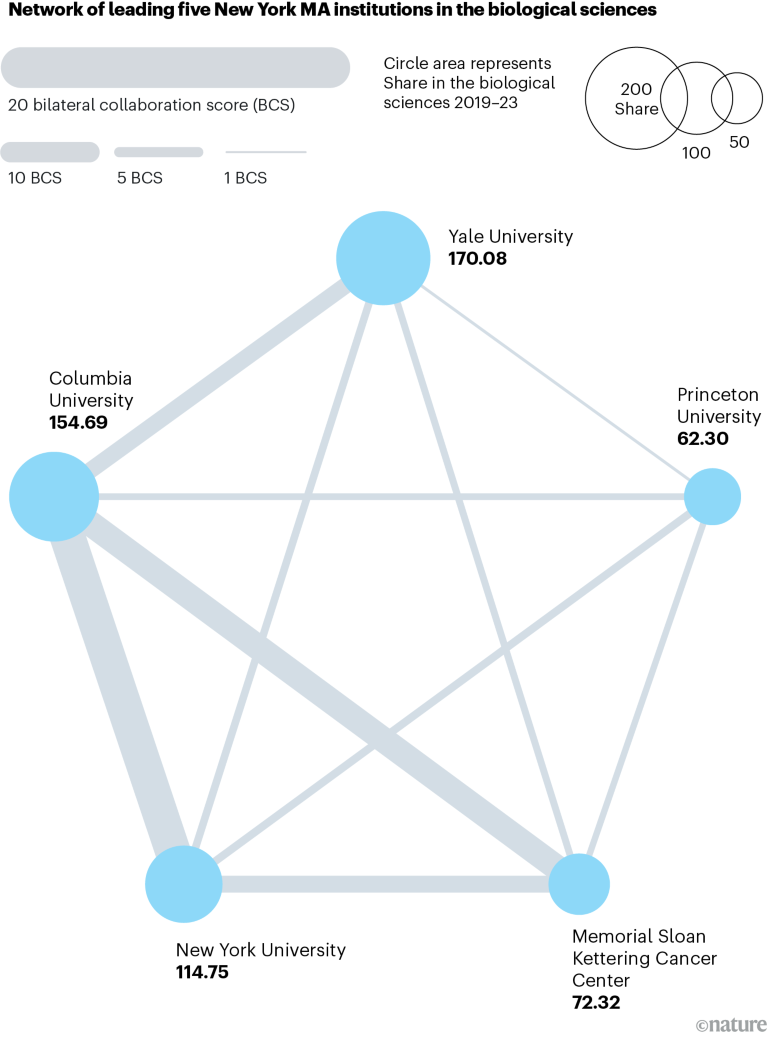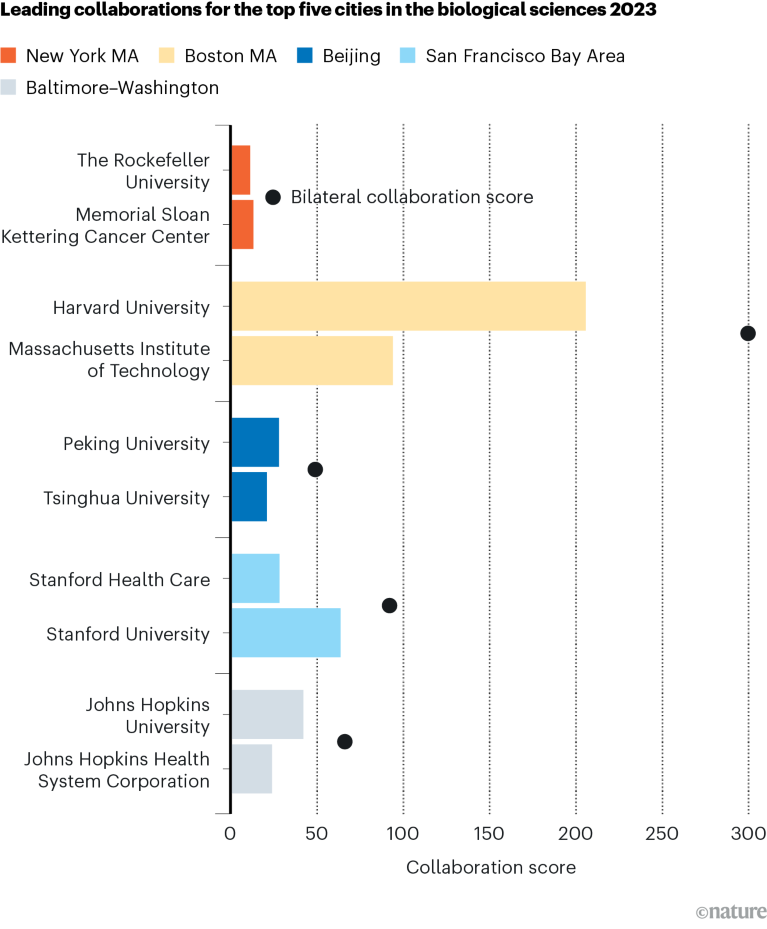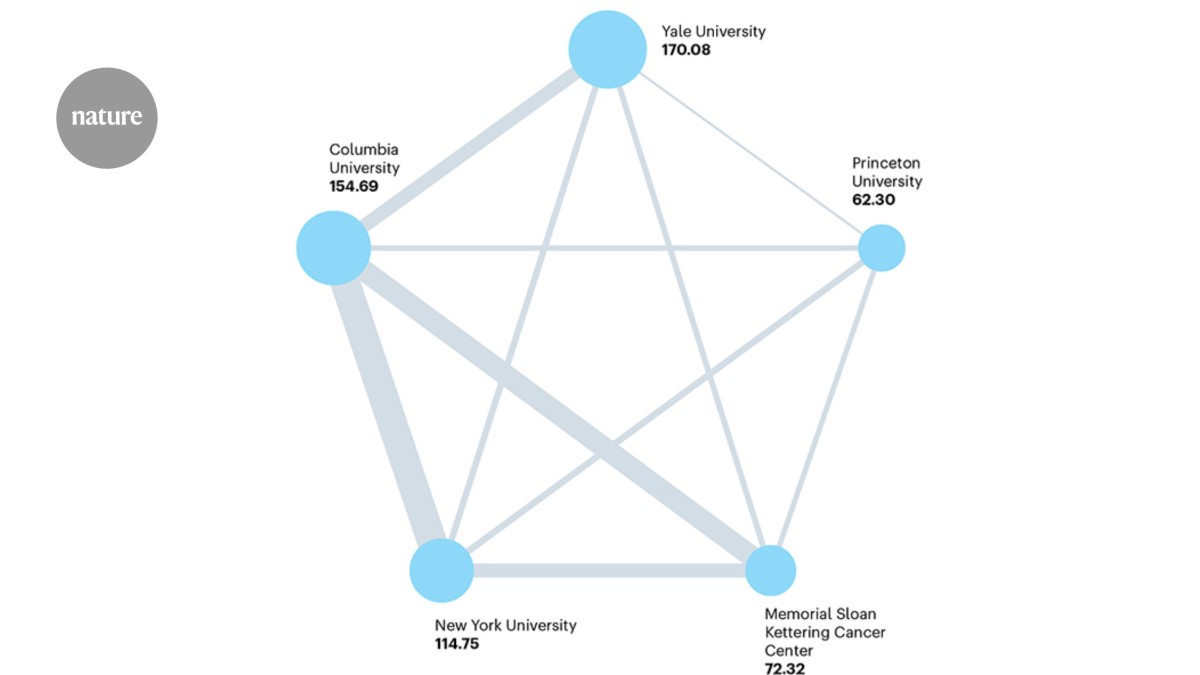In the biological sciences, the United States has the leading Nature Index science cities. But although New York and Boston continue to dominate the top spots, 2023 has brought a significant shift in other parts of the rankings. Beijing’s impressive growth in the subject, shown by an 18.8% year-on-year increase in adjusted Share, alongside a 10.1% decline in adjusted Share for the San Francisco Bay Area, has propelled the Chinese capital into the top three. Further down the list, the European research centres of London and Paris have maintained their 7th and 8th positions for another year, even after small declines in adjusted Share.
Part of Beijing’s new-found prominence can be attributed to its leading research institution, the Chinese Academy of Sciences, being home to research labs such as the State Key Laboratory of Plant Genomics and the National Key Lab of Molecular and Developmental Biology. These have helped the city secure a 52% increase in its adjusted Share from 2019 to 2023. Although Beijing holds a comfortable lead in biological-sciences research within China, it is not the only city experiencing significant growth. Guangzhou, in southern China, and the central city of Wuhan — buoyed by their expanding research and development sites — have made considerable year-on-year gains in adjusted Share for biological sciences, rising around 4 and 11 positions, respectively, in the ranking for the subject. If their growth continues, it is likely that they will enter the top 10 in the coming years.
Despite a decrease in its adjusted Share (−7.6%), New York’s extensive network of medical centres, academic institutions and biotechnology companies has helped the city to maintain its global lead. It also still contributes 12.6% of the total US Share in the biological sciences. One of the most dynamic and influential collaborations in the city is the partnership between Columbia University and New York University, which has driven advances in areas such neuroscience, cancer and regenerative science. This stands as one of the main pillars of New York’s leading institutional network, with a bilateral collaboration score (BCS) of 17.39. These two universities also form several strong connections with other local institutions, such as that between Memorial Sloan Kettering Cancer Centre and Columbia University (BCS 12.44), and Columbia University and Yale University (BCS 8.04).

Source: Nature Index; Data analysis: Aayush Kagathra; Data visualization: Tanner Maxwell and Simon Baker
When it comes to the leading cities’ top institutional pairings in biological sciences, Boston’s collaboration between Harvard University and the Massachusetts Institute of Technology is the powerhouse, clearly outstripping other partnerships among the leading five cities. The San Francisco Bay Area has the second-most impactful pairing of the five, a collaboration between Stanford Health Care and Stanford University. Despite Beijing’s Chinese Academy of Sciences being the leading institution in the country for biological sciences in the Nature Index, it is absent from the city’s top pairing, which features a collaboration between Peking University and Tsinghua University.

Source: Nature Index; Data analysis: Aayush Kagathra; Data visualization: Tanner Maxwell and Simon Baker
This article is part of Nature Index 2024 Science cities, a supplement produced with financial support from the Beijing Municipal Science & Technology Commission, Administrative Commission of Zhongguancun Science Park. Nature maintains full independence in all editorial decisions related to the content. For more information about Nature Index, see the homepage.


